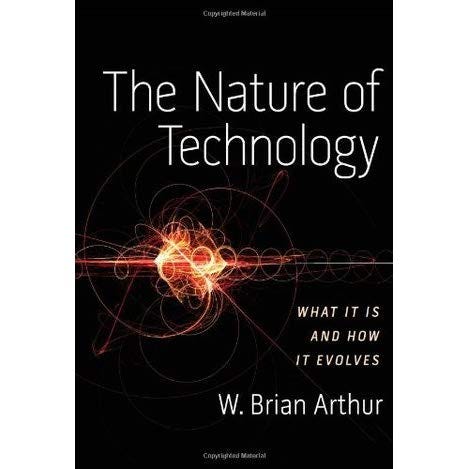What technological innovation really means for your product and company

It is far beyond from common sense!

A lot has been talked lately about how technological innovation is reshaping our world. Technology’s rate of improvement is increasing in a fast pace and advancements are being made in a variety of fields that, combined, shift the way we do business, run our companies and even relate to one another. But how can you really grasp what it means and take advantage of it? I’ve been studying this subject and would like to share here my thoughts about it.
When it comes to the technologies that are reshaping our world, the Fourth Industrial Revolution is a rich source of information that is worth taking a look
First of all, let’s have a common understanding of technology
Even though it seems pointless to conceptualize technology, the absence of common ground for this word is the beginning of misunderstanding when we talk about technological innovation and I’m going to specify it.
One definition of technology that I really like is the one that was drawn by Lewis Mumford in his book “Technics and Civilization”, 1934; Which is: Technology is something that transforms raw materials (geological, biological) in some useful way.

Notice that this definition is broad and very inclusive, though. From that perspective, anything from hardware, software, processes, skills and knowledge can be seen as technology. Building on that definition, I bring the example of a Laptop; It is technology, regarding the concept we’ve just seen, but it can also be a combination of a wide range of technologies, it all depends on how you analyze it. And that’s one thing that can lead us to misunderstanding. Another one is related to how perceivable the technology adopted to develop some product is to the end customer. Touch screen, for instance, is a technology that was a breakthrough for the smartphone industry and jumps into the customer’s face in the experience of use of a smartphone. Wearables are other good example for that. On the other hand, think software programming languages: They are also technology and are used for developing mobile apps, which are paramount for making our lives easier nowadays, but we as users don’t have even a glance of what is running on the background. What really matters is what the product can do for us.
What about technological innovation?
The author Brian Author defines technological innovation in his book “The Nature of Technology”, 2009, as the improvement to existing technologies, the creation of new ones or the act of performing old functions with fundamentally new building blocks.
Connecting the dots here, both the Laptop and Touch screens were meant to perform old functions with new building blocks and enhanced performance. Software programming languages fit the definition of improvement to existing technologies, though.

Despite being fitted into different concepts of technological innovation, all those technologies mentioned above have their pace of improvement and there are some theories that try to understand and predict such rate. Moore’s law became widespread after Gordon Moore, in 1965, made his predictions about the improvement of computers’ processing power. However, there are a few others, such as Wright’s and Goddard’s law, being each one of those best suitable for different approaches of analyzing evolution (but this is topic for another post, as there are also room for disagreement about how well those laws perform on measuring innovation rate). Some metrics such as cost of investing in a technology or adoption within an industry can be used for measuring the rate of innovation. Metrics are important so that we have common ground to talk about what we consider as improvement. The key point here is to identify which kind of technology, regarding the definitions brought here, is going to be used by your business and which is the most important metric for you to make an investment decision. Also bear in mind that forces as design constraints, physical laws, human agencies and institutional factors drive the pace of innovation, being these last two most important for business. In the last few years, Moore’s law is being questioned as computer’s processors are reaching some physical limits, but this matter is not affecting customers directly, as the processing power we currently have available meets our needs. By contrast, human and institutional factors still prevent technologies like Blockchain to really gain widespread adoption into business use cases.
Some models try to explain these paces of improvement, analyzing the complexity of technologies and how invasive each technology is, but this is also subject to another post. You can also search for Mechanistic and Phenomenological models to better grasp this.
For businesses what really matters are innovation and business models, not technological innovation
We’ve been talking so far about technological innovation, but I would like to zoom out the subject and talk about innovation in general, which happens, in my perspective, when technology or technological innovation meets customers’ needs. Making a recap about the Touchscreen, it was a technological innovation that could be fitted into a business model and shifted an entire industry.
To counterpoint that, I want to talk about Netflix. The company is famous for its streaming technology that could make it present in everyone of us’ houses. What amazes me here is that Netflix was innovating much before that, though, when it changed the business model of movie rentals from a pay per use (with fines for late returns) to a monthly subscription with fixed price. I can’t help but wonder what would have happened to Netflix if the streaming technology had never been available, and if I can make my guess, I bet it would still be a successful product with possibly a really smaller scale. Streaming leveraged a new business model and gave to it a worldwide scale.
Both touch screens and Netflix are present in our day to day lives, but their birth came from two very different perspectives. Touch screen is a technology that can almost be seen as a product ready to be released to market, but streaming itself means nothing unless you have good content to spread around. Furthermore, the end customer has no idea about what happens in the background when he/she is watching a movie, regardless of what technological improvements are made. What they have in common is that it is paramount for any technology to become adopted to have a business model that can meet customers’ needs and turn it into a useful product.
There is an article published on the MIT Sloan Management Review called “Five Myths About Digital Transformation” that uses this business model concept using the example of Uber, that combined existing technologies to meet customers’ needs in a different way. There is also a very good post here in Medium called “We Need Breakthrough Business Models, Not Breakthrough Technology”that supports this idea.
To sum up, taking all these studies into consideration, I can say that technology really helps broadening the impact of businesses and providing gains of scale. It also can help you decrease the cost per unit service of your product, but the key point for successful products is still how well it can meet users’ needs and have a sustainable business model.
Liked what you’ve just read? Don’t forget to give this story a round of applause 🙂
What technological innovation really means for your product and company was originally published in ProductCoalition.com on Medium, where people are continuing the conversation by highlighting and responding to this story.
